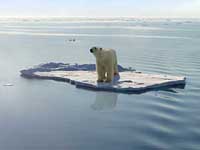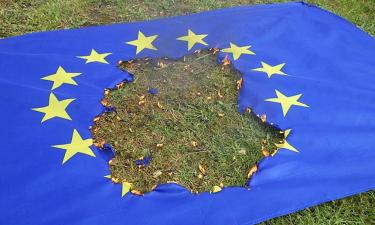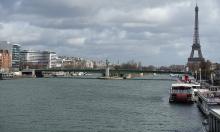Scientists Predict North Pole Total Melting: Study
The North Pole will turn into an open sea during summer within a decade, according to data released by a team of explorers.

The Catlin Arctic Survey team, led by explorer Pen Hadow, measured the thickness of the ice as it sledged and hiked through the northern part of the Beaufort Sea in the north Pole earlier this year during a research project. Their findings show that most of the ice in the region is first-year ice that is only around 1.8 meters (six feet) deep and will melt next summer. The region has traditionally contained, thicker multiyear ice which does not melt as rapidly.
"With a larger part of the region now first-year ice, it is clearly more vulnerable," said Professor Peter Wadhams, part of the Polar Ocean Physics Group at the University of Cambridge which analyzed the data. "The area is now more likely to become open water each summer, bringing forward the potential date when the summer sea ice will be completely gone."
Wadhams said the Catlin Arctic Survey data supports the new consensus that the Arctic will be ice-free in summer within 20 years, and that much of the decrease will happen within 10 years.
Martin Sommerkorn of the World Wildlife Fund said that such a loss of Arctic sea ice cover could lead to flooding affecting one-quarter of the world's population, substantial increases in greenhouse gas emissions from massive carbon pools and extreme global weather changes.
Global warming has raised the stakes in the scramble for sovereignty in the Arctic because shrinking polar ice could someday open resource development and new shipping lanes. The rapid melting of ice has raised speculation that the Northwest Passage linking the Atlantic and Pacific oceans could one day become a regular shipping lane.
The results come as negotiators prepare to meet in Copenhagen in December to draft a global climate pact.
The Associated Press contributed to the report.
Subscribe to Pravda.Ru Telegram channel, Facebook, RSS!





